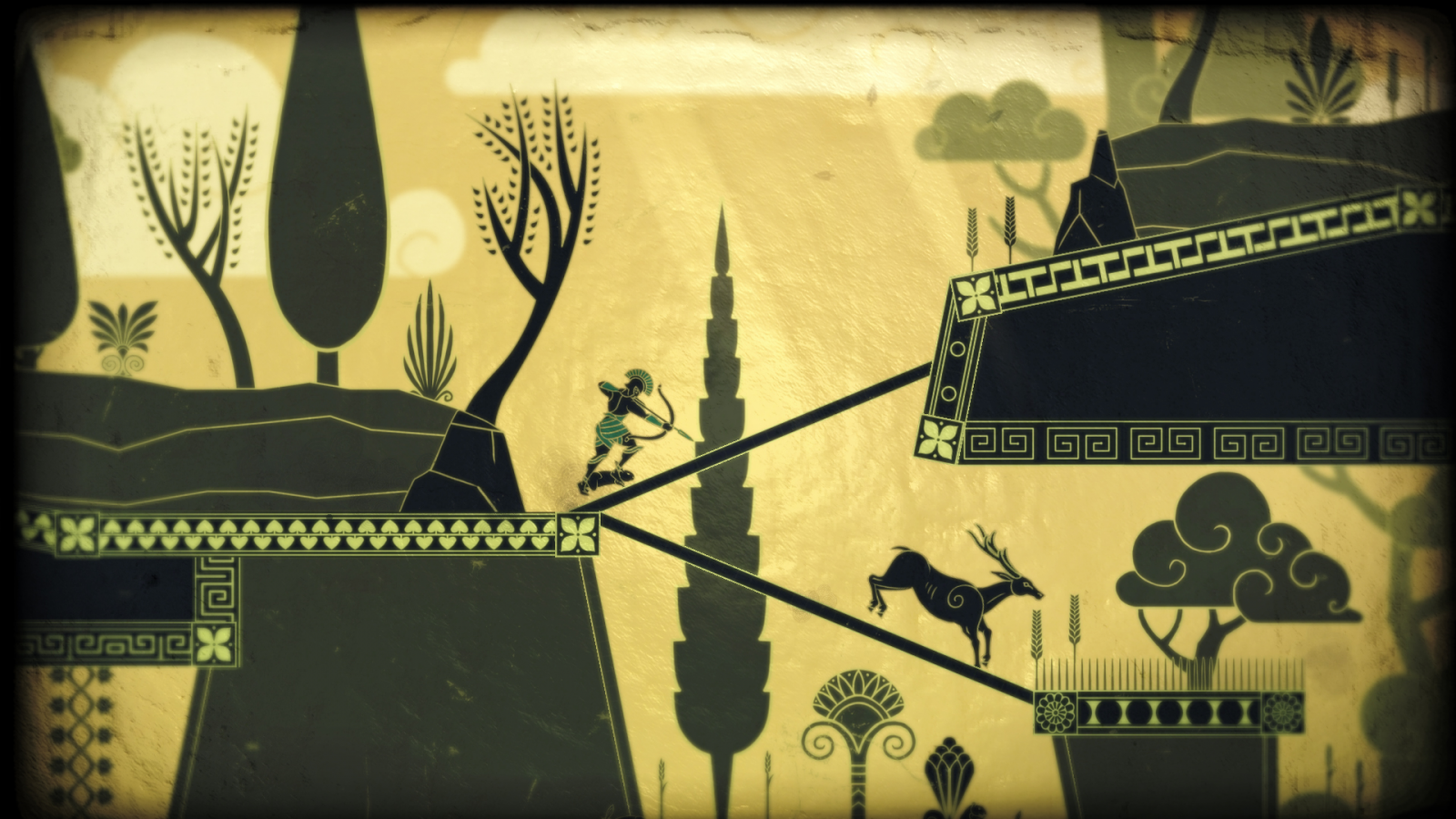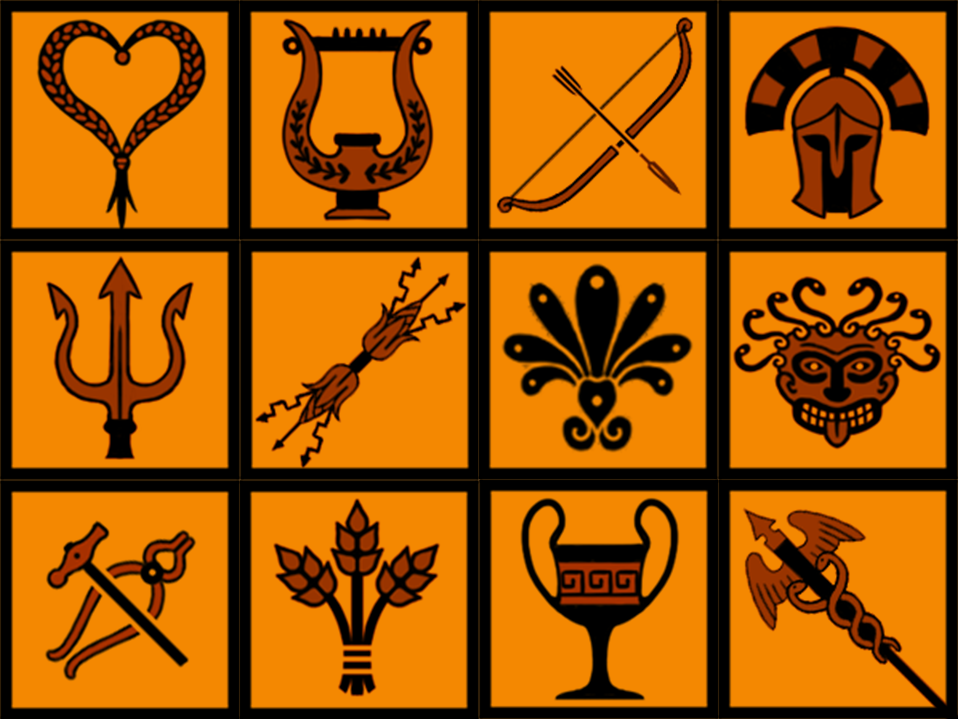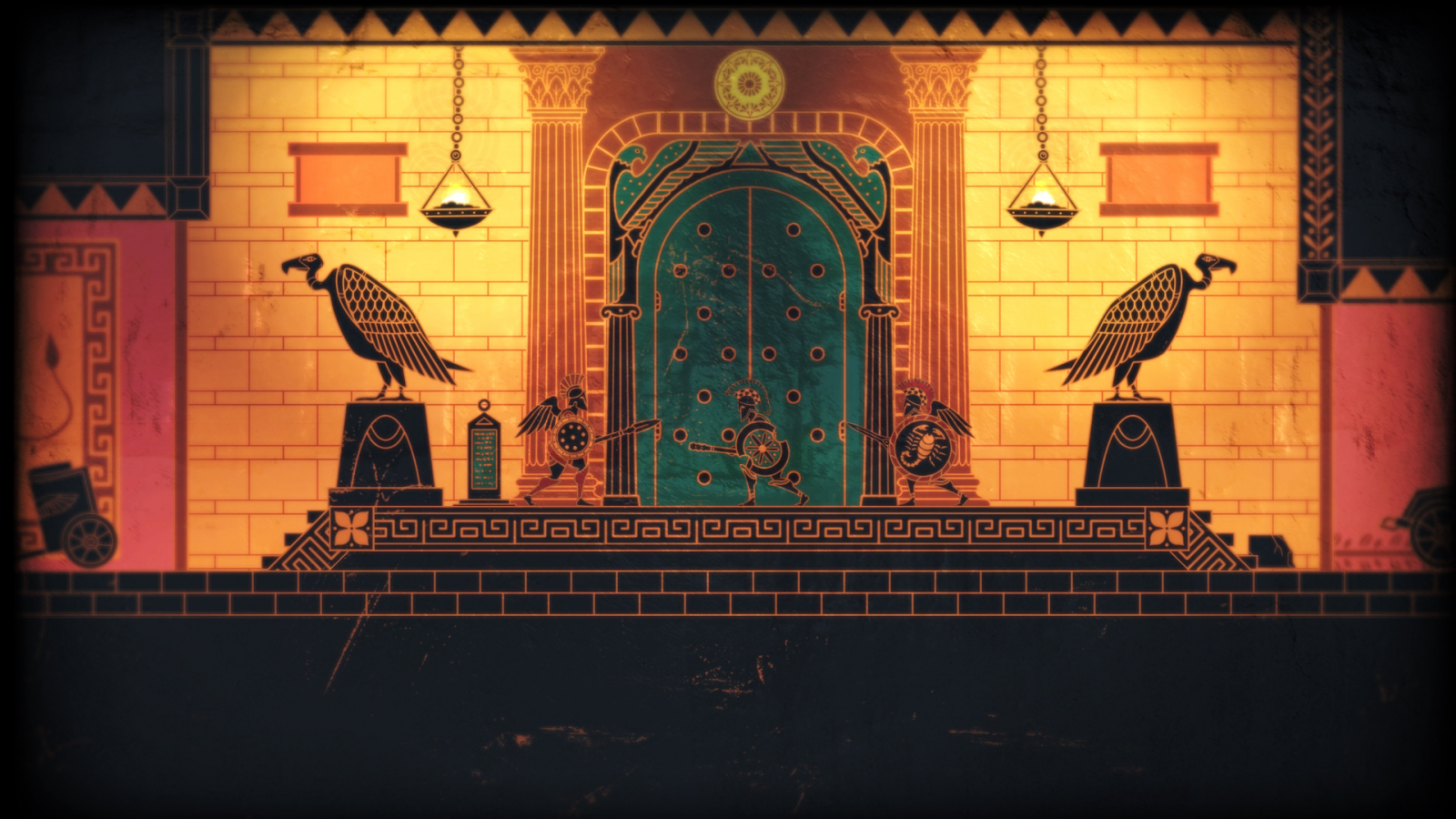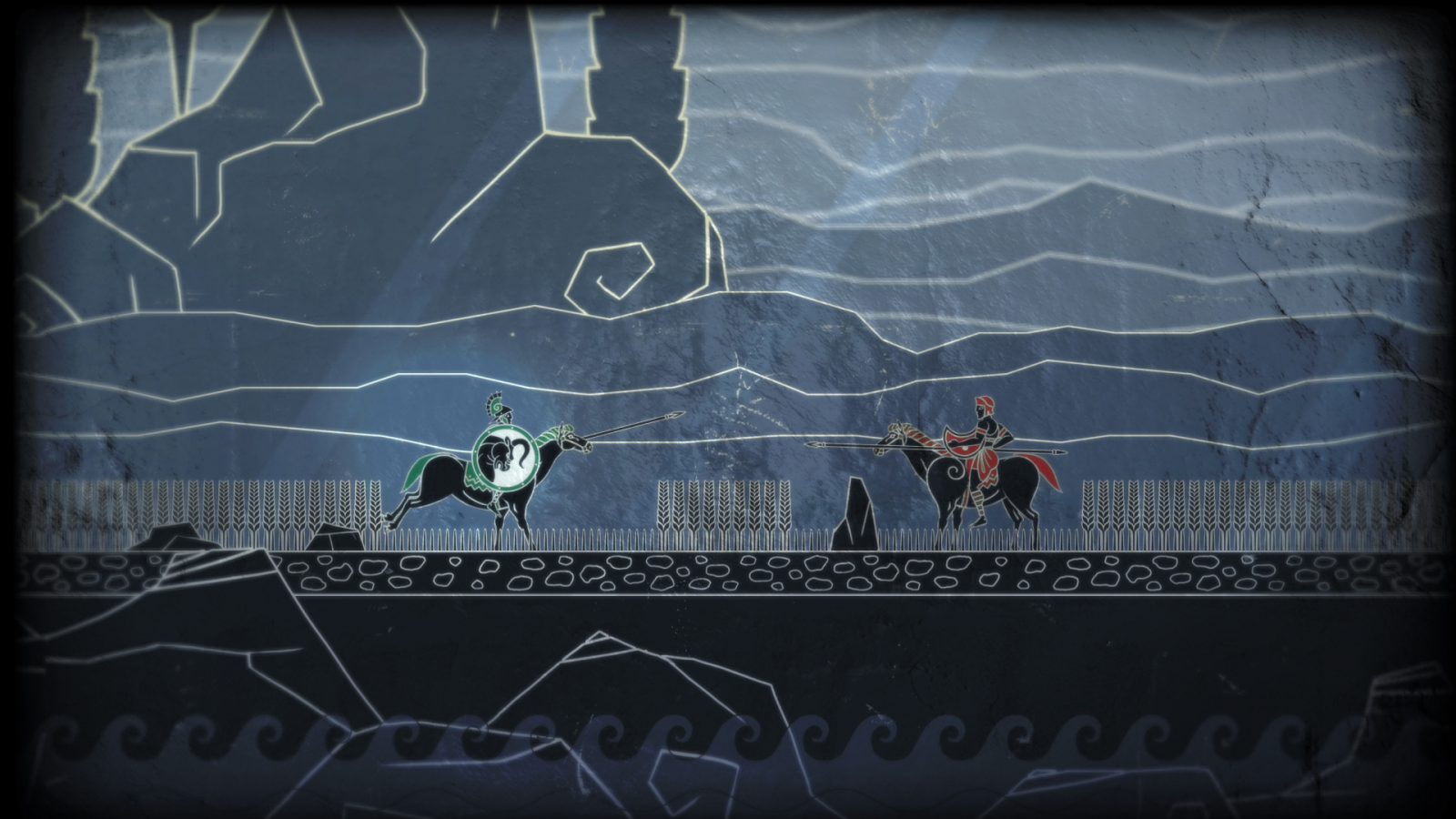Practitioners' Voices in Classical Reception Studies
ISSN 1756-5049
You are here
- Home
- Past Issues
- Issue 8 (2017)
- Maciej Paprocki
Maciej Paprocki
 Maciej Paprocki is an academic whose current research examines depictions of political tensions between the families of Zeus and Hyperion in Ancient Greek literature. Since November 2015 he has been a Postdoctoral Fellow in the Distant Worlds Graduate School (Münchner Zentrum für Antike Welten) at the Ludwig-Maximilians-Universität in München. He has a keen interest in ancient Greek political theology, especially in the assignation and transferral of divine powers, rebellions against Zeus and the ontology of Ancient Greek godhood; he has also previously worked on research in both cultural studies (on concepts such as the body politic metaphor in English and American culture) and desert road archaeology (examining the road links between Roman Egypt, oases and neighbouring lands).
Maciej Paprocki is an academic whose current research examines depictions of political tensions between the families of Zeus and Hyperion in Ancient Greek literature. Since November 2015 he has been a Postdoctoral Fellow in the Distant Worlds Graduate School (Münchner Zentrum für Antike Welten) at the Ludwig-Maximilians-Universität in München. He has a keen interest in ancient Greek political theology, especially in the assignation and transferral of divine powers, rebellions against Zeus and the ontology of Ancient Greek godhood; he has also previously worked on research in both cultural studies (on concepts such as the body politic metaphor in English and American culture) and desert road archaeology (examining the road links between Roman Egypt, oases and neighbouring lands).
Between April 2013 and February 2015, Maciej was also a member of the Alientrap Games team, where, as Mythology Consultant, he helped to design their latest project, Apotheon™, a 2D platform action-RPG game done in a black-figure vase art style. He acted as a consultant on the game narrative/story as well as co-designing characters and writing dialogues. This interview with Emma Bridges developed from a presentation which Maciej gave at the colloquium ‘Remaking ancient Greek and Roman myths in the twenty-first century’ which was held at the Open University’s London centre on 7th July 2016.
EB. Thank you for talking to us about your work on Apotheon, Maciej. Could you start by giving us an introduction to the game and how its setting relates to Greek myth?
MP. In the words of Gilles Roy, ‘If I had to explain Apotheon to someone who doesn’t play video games, I’d say this: “imagine the figures of ancient Greek vase art, come to life…”’ (2015). The game’s graphic style is firmly based on black figure pottery aesthetics, with solid characters and objects depicted in black on ochre-tinted backgrounds. Backgrounds in some locations are assigned other hues to change the mood and provide variation, with midnight blues of Hades’ Underworld and lush greens of Artemis’ woodlands.

Graphics notwithstanding, the crucial element of Apotheon is its story and the mythical continuum in which it develops. Apotheon’s narrative combines and develops Hesiod's succession myth and the myth of the five ages of man, which is outlined in the Works and Days. The game is set after the end of the Iron Age, when Zeus decrees the final separation between deities and humanity so that the current generation may die out. The Olympian gods remove their divine faculties from the earth, whereas minor gods of the countryside leave the world and travel to live on Mount Olympus until the earth is cleansed of humanity. As a result, Mount Olympus becomes a crowded divine ‘refugee camp’, whilst the civilization collapses as forests and oceans become barren, springs and rivers run dry and crops fail under the sunless sky.
With all the earthquakes, plagues, and famines we're throwing at them, I'm surprised the mortals have lasted this long!
Unnamed River God
EB. Could you also tell us a little more about the premise of the game and how a player navigates through its story?
MP. The game story follows Nikandreos, a young Greek warrior from Dion in Macedonia. During an attack on his hometown, Nikandreos is plucked from the fray by Hera and urged by her to topple Zeus, whose affairs have deeply wounded the Queen of the Gods. Hera directs Nikandreos to wrestle or win six iconic badges of office from Apollo, Artemis, Demeter, Ares, Poseidon, and Athena—and thus absorb divine shares of power (in Greek, τιμᾶι, timai) held within; furthermore, the player may decide to collect the items of four remaining Olympian gods (that is, Aphrodite’s girdle, Dionysus’ kantharos (drinking cup), Hermes’ sandals, and Hephaestus’ hammer). During his journeys, Nikandreos learns that the edict of Zeus has deeply divided the divine society, with many greater and lesser deities (including Helios, Thetis, Persephone, and Daphne) deciding to clandestinely oppose the divine establishment and assist Nikandreos in his quest. At the beginning of the third act, Hera immortalizes Nikandreos and imbues him with her own timē so that he may become powerful enough to challenge Zeus: what ensues is a heated thunderbolt battle, the outcome of which determines who truly deserves the position of the King of the Gods.

Collectable timai of Apotheon.
Top row, from left: Aphrodite, Apollo, Artemis, Ares.
Middle row: Poseidon, Zeus, Hera, Athena.
Bottom row: Hephaestus, Demeter, Dionysus, Hermes.
EB. So the game takes as its starting point Hesiod’s narrative and then imagines what might happen at the point where he leaves off. What was the process by which you developed the narrative from this point on?
MP. When I began to work for Alientrap, the developers only knew that the designated hero was to fight the gods and take their powers for himself: I was brought in to add flesh and bones to this idea. Fleshing out this theomachy required asking tough questions. If Hesiod’s prophecy in Works and Days about the end of Iron Age were to be fulfilled, what would its effects be for the gods who would suddenly have to leave the earth? Where would they go? What would humans do, faced with oncoming oblivion? Would there be any gods who pity humanity? If yes, why? Wouldn’t these divine dissidents do something about humanity’s imminent destruction? Other, even more pointed questions also needed to be asked. Could you really kill a Greek god? If yes, how?
This played well into my own brand of research, which I like to call epic theologies. In brief, I want to understand how Greek gods work, to learn about their powers, limitations, fears, and wants. I believe that Greek myths, especially as narrated in epic poems, contain hidden messages about the realities of divine nature. As a development team, we had to decipher these messages to learn how the gods functioned as three-dimensional characters for Homer and Hesiod; the second step was to apply these newly-discovered rules to rewrite gods into believable characters who would interact in thought-provoking ways.
EB. Could you give us an example of the way in which elements of the game use these ideas?
MP. One example is that the game stresses the notion of Nikandreos having to collect timai of all Olympians before attacking Zeus; in its essence, this narrative choice alludes to a passage from the Iliad (8.18-32) in which Zeus brags that even if all Olympians were to simultaneously pit their not inconsiderable powers against him, they would not subdue him. Athena cowers in response and asserts that Zeus’ might is ‘unyielding’, οὐκ ἐπιεικτόν (8.32), while conniving Hera pointedly notes that it is merely ‘not easily mastered', οὐκ ἀλαπαδνόν (8.463): Hera’s barbed remark is the spark that sets the story of Apotheon in motion.
Another interesting challenge was to devise strategies Nikandreos could use against individual deities: I scanned the myth corpus in search of gods’ possible weaknesses and ways to exploit them. To get Aphrodite’s girdle, Nikandreos must continuously dodge Eros’ arrows so that they hit Aphrodite instead: after three hits, Aphrodite feels compassion towards Nikandreos and willingly parts with her girdle. This tactic refers to Aphrodite’s flaw exploited by Zeus in the Homeric Hymn to Aphrodite (36-57). The goddess took pleasure in making gods couple with mortals, engineering a string of Zeus’ affairs. Displeased Zeus considered the resultant demigod progeny a liability to his rule: in retribution, he directed Aphrodite’s terrible desire (ἔκπαγλος ἵμερος, 57) against its mistress and made the goddess fall in love with the mortal Anchises. In the game dialogue, Aphrodite alludes to Zeus’ ironic punishment and her everlasting disgrace. Eyeing Nikandreos with sympathy, she commiserates with the suffering mortals and freely gives up her powers. The scene captures the ambivalent divine attitude towards mortals, half lenient benevolence, half internalised bigotry: Aphrodite pities mortals, but she admits she found being mated to a mortal shameful. In Apotheon the gods never let you forget about their alleged superiority.
The third case in point is Nikandreos’ in-game immortalisation. Some players wrote posts at the Steam forum, wondering why gods do not recognise Nikandreos’ humanity unless under close scrutiny: moreover, they correctly deduced that a human would not last long in a duel against a deity—unless imbued with divine power. Indeed, when Hera sends Nikandreos to Olympus, she commands him to step into the flaming hearth, an allusion to the ancient ritual for making a mortal immortal. The Homeric Hymn to Demeter (231-249) and Apollodorus’ Library (3.13.6) narrate that Demeter and Thetis placed mortals in hearths so that the fire would purify their earthly bodies and exalt them to a higher state of existence. Having stood in fire, Nikandreos enters Olympus as a man cleansed of mortal elements and made more godlike. Notably, this does not make him immortal, only more powerful and less conspicuous in the Olympian halls. Every share of divine honour he wins or wrestles from the gods pushes him further towards true immortality, which he eventually obtains after seizing Zeus’ thunderbolt.

EB. How does the ancient Greek mythical setting manifest itself for players as they work their way through the game?
MP. A key element beyond graphics and story was the interactivity inherent in video gaming. For Apotheon, we wanted an immersive experience that combines style and story to create a ‘mythological play space’, where the player takes an active role in the unfolding narrative (Roy 2015). To increase the player immersion, we decided to blend archaic Greek art with period weapons and artefacts of the myth. While in fight, Nikandreos can wield several types of armaments (including doru, xiphos, labrys, and kopis) and shields (such as pelta or hoplon); furthermore, he can imbibe healing and warding potions brewed from dittany of Crete (well known to Harry Potter fans!), olive oil, milk of moly root (used by Odysseus against Circe) and other ingredients. However, my chief objective was to steep Apotheon deeply in the body of ancient Greek literature: accordingly, I prepared 50 passages from works of several Ancient Greek writers (ranging from Homer to Oppian of Apamea), which were inserted into the game as inscribed stelae to immerse players in the game world and provide them with backstories of deities and monsters to be encountered. We know that some players skip the stelae; nonetheless, those who read them often praise their inclusion and note their increased understanding of the game narrative.
EB. Why was the name Nikandreos chosen for the central character?
MP. Jesse McGibney, the lead artist for the Alientrap Games, chose a name that would reflect the hero’s ultimate destiny: the victory of the man and the twilight of the gods. In standard Ancient Greek, Nikandros denotes ‘victory of a man’, from the Greek elements νίκη (nikē) ‘victory’ and ἀνήρ (anēr) ‘man’ (genitive ἀνδρός, andros). I never asked him why he included the extra ‘e’; I like to think that it made the character unique, in line with his destiny.
EB. Can you tell us a little more about how your own academic research influenced the way you approached writing Apotheon? Did working on this game cause you to rethink some of your own ideas about the Greek gods?
MP. One of my main research interests is the ambiguous immortality of ancient Greek gods, which obviously played a role when we designed a game about defeating them. Were all ancient Greek deities truly ‘immortal’? Among the archaic Greek works, the Iliad and Theogony provide slightly different perspectives on whether fully–fledged gods can die. The common reading of ἀθάνατος καὶ ἀγήραος compound tacitly assumes that a deity was unconditionally immune to both death and ageing, but both texts question this interpretation: Hesiod’s Theogony describes the monstrous brood of Phorkys and Keto, beings who are unageing but apparently vulnerable to death from wounds (270-336); whereas the Iliad mentions Skamander, a river god almost vaporised by Hephaestus (21.186–369). Deicide has been interpreted as an absurd impossibility hovering at the edges of these texts, a terrifying remnant of a primordial world turned upside–down: existential anxiety notwithstanding, I firmly believe that the Ancient Greek mythical imagination accommodated vulnerable deities. Gods evidently could be harmed in very specific contexts, although whether wounds would prove fatal appears to be an open issue: after all, nobody tried to repeatedly maim Hera or Athena! Nonetheless, we get a telling clue in the Iliad: Ares himself was bound and locked in a bronze jar by the giants Otus and Ephialtes—and he would have perished there, had not Hermes helped him in his predicament, as ‘the hard bondage was breaking him’ (5.388–391, trans. Lattimore).
Bearing all that (and the audience’s expectations) in mind, we left the fate of the defeated gods unknown, their bodies vanishing in a puff of light-filled smoke. I like to think that they did not truly ‘die’, but were translated, faded, into an undefined state of existence, possibly descending to Tartaros, their shares of power left behind in the form of small objects for Nikandreos to collect. During the final stages of writing, I briefly toyed with an idea to show defeated gods in Tartaros, hung in chains from the ceiling, the voice of Hera reaffirming that their bondage would not last forever—an obvious sequel hook; however, I arrived at the conclusion that including this scene would have detracted from the game’s message. All in all, players can interpret the fate of gods however they wish: if they want to see them killed off, the game story does not exclude this interpretation. Many gods must have escaped Nikandreos’ carnage: in Apotheon, you slay six of them, whereas Hesiod knows of over six thousand Greek deities, mostly left unnamed. I keep wondering about how untold stories of these gods unfolded in parallel to Apotheon’s main narrative: I think that myth-inspired tales should not give you complete closure!

EB. Are there particular challenges associated with reimagining the gods of the ancient Greeks in a way which makes sense to a modern audience?
MP. One prominent challenge stems from the fact that modern audiences tend to see the Greek gods as stock characters, superheroes with a single superpower and one defining character trait: at most, they learn in schools that Ares was the despicable god of war, Aphrodite the spiteful goddess of love and Hera the shrewish, yet easily duped, goddess of marriage. Reduced to bundles of adjectives and powers, gods become cardboard characters: they lose their personalities, histories and, most importantly, their motivations. Not knowing what makes gods tick, modern creators encounter problems while writing stories involving Greek deities. If they build on the audience’s expectations, they have to work with a very limited repertoire of bland associations. If they follow the source material and describe the gods in all their complexity, they run the risk of alienating the audience with an overabundance of references and characters. I love Hesiod’s Theogony, but I know that it is not a text you would give to a layperson, even though it means to depict the very basics of the myth: the birth and ordering of the Greek universe. You should ease an audience into the unfamiliar material so that they can gradually understand the setting and characters.
In retrospect, I believe that Apotheon succeeded in balancing the familiar and unfamiliar material. The first stage of the game takes place on earth, in the village of Dion, as you battle against human raiders. At the temple summit of Dion, you get to meet Hera, a very well-known goddess, who from that point on guides you in your quest against the gods of Olympus. The first three gods to defeat, Apollo, Artemis and Demeter, respectively represent sunlight, animals and plant growth, the bare necessities of human life which Nikandreos must obtain in order to save his village. All in all, the first stages of the game build on recognisable story motifs, simultaneously setting the stage for the more complex material ahead. To make the story more approachable, we often had to cut ideas that were deemed too obscure. One example is Nikandreos’ patron goddess, Hera. In the initial draft, Nikandreos’ helper goddess was Thetis, a Nereid repeatedly slighted by Zeus. A fascinating character, Thetis was destined to bear a son more powerful than his father: to avert this threat to his kingship, Zeus married her off by force to his mortal grandson, Peleus, to whom Thetis bore Achilles. I wrote a version in which Thetis orchestrates a coup d’état on Olympus in collusion with Dionysus, Hephaestus and Demeter, using Nikandreos as her oblivious pawn: unfortunately, test audiences found her inclusion confusing and we had to replace her with Hera.
Another problem for myth-inspired creators is dismantling popular associations already made by others. For example, Disney’s Hercules (1997) cemented the image of Hades as the devilish god of evil, whereas Greek myths depict him as a neutral leader mostly concerned with ruling his kingdom and shepherding the dead. Returning to the roots, Apotheon depicts Hades as a polite, supportive monarch, but devotes more attention to his spouse, Persephone, since Nikandreos needs her powers of renewal to return life to the earth. Both deities treat Nikandreos with respect and assist him in his quest, indirectly contravening Zeus’ decrees. In my view, one of the overarching themes of Greek mythology is the maintenance of the fragile balance between deities and dominions. By transferring the entirety of humanity into the Underworld, Zeus shirks his royal responsibility and adds to Hades’ duties: overburdened Hades quietly disapproves of Zeus’ decision as the Underworld overfills with masses of despondent spirits.
Follow this link to watch a cutscene of Hades and Persephone
Yet another challenge faced by modern creators is making sense of mutually-exclusive myth variants. When I started researching Greek myths in earnest, I was disappointed that there is no definitive version of events. I wanted to know precisely how mythical stories unfolded and why, but the myths would not yield to my wishes. With the wisdom of hindsight, I now realise I wanted to flatten myths, deprive them of their polyphony: they live in our imaginations because they subtly shift from retelling to retelling to accommodate divergent perspectives, clashing voices, changing circumstances. Every creator that sets out to write a story in the Greek mythological milieu will face stark choices: which version do I follow? And, more importantly, why? Whose story do I want to tell? Which characters do I cast in favourable light? Which character trait do I want to highlight? Interestingly, even when you exclude incongruent variants, there will always be gaps in our understanding: this is where we have a chance to shine as authors and fill gaps with our guesswork. If the audience does not notice the seams between the ancient material and your ideas, you wrote a well-structured story. One example of such a tightly-knit narrative is Donna Jo Napoli’s Sirena (1998): the author started from the episode of Philoctetes’ exile on the island of Lemnos (about which we know very little!) and crafted around it a delightful tale about the hero falling in love with a local siren. Nothing in the myth corpus excludes such an interpretation: in fact, the tone and scope of Napoli’s narrative fits the myth so well that it became a part of my mythological head canon.
EB. What do you think it is about Greek myth which means that it’s such a rich source of inspiration for creative media like video games?
MP. I often ask myself that question—and I think there is no straightforward answer! Sarah Iles Johnston’s 2015 article, ‘The Greek mythic story world’, demonstrates that the body of Greek myth distinguishes itself through its richness and interconnectedness: almost every character, be it god or mortal, features in at least several works that reveal his or her strengths, limitations, fears and wants. The depth and breadth of the material translates into captivating psychological verisimilitude: just pit one mythological character against another and watch sparks fly.
To give you an example: from the Homeric Hymn to Apollo we learn of Apollo’s birth and first daring exploits, which include vengeful destruction of Telphusa’s spring. In turn, the Homeric Hymn to Hermes showcases Apollo’s uneasy relationship with Hermes and comments upon Apollo’s recklessness and smugness. Finally, the Iliad alludes to the episode when Apollo and Poseidon committed an unspecified grave offence against Zeus and were sent in punishment to serve the Trojan king Laomedon for wages (21.441-460, 7.452). Why was Apollo forced into the mortal servitude remains unknown, but Robert Porter (2014: 520-526) convincingly argued that Apollo might have taken part in the ancient coup d’état against Zeus, ‘when all the other Olympians sought to bind him, Hera and Poseidon and Pallas Athene’ (1.399-400, trans. Lattimore). The abovementioned set of references allows one to reasonably infer that Apollo was a haughty, overconfident god who frequently challenged other gods for power and had a stormy relationship with his father. The richness of these stories makes us believe that we know Apollo as a person: we can predict how he would react in each situation, what kind of language he would use, what his priorities would be… He is neither kind nor charitable—but what a character he is! Superheroes of old, gods err and abuse their powers: their flawed idiosyncrasies are what makes them believable and attractive to a modern creator.
EB. Are players usually people who are already familiar with the mythical story which you’ve used as inspiration, or is the game a way of introducing the Greek myths to those who might never have thought about them much before?
MP. We had some feedback from myth fans who were very happy to play a game so deeply steeped in the Greek mythology; however, most players apparently had little to no exposure to Greek lore beyond their school years. What drew them in was vase-based graphic style: the appreciation of the mythological backstory was a by-product, but a very welcome one.
EB. What’s your next project, and do you have any plans to work on other video games in future?
MP. I am currently writing a monograph on a family of gods I dubbed ‘the Hyperionides’. Descendants of Titans Hyperion and Theia, the group includes such characters as Selene (the Moon), Eos (the Dawn), Helios (the Sun) and his children (witches: Kirke and Pasiphaë, kings: Aeëtes and Perses) and grandchildren (such as Medea, Ariadne and Phaedra). Fascinating offshoots of the early Greek mythical imagination, the Hyperionides balance precariously between the gods and mortals, becoming embroiled in exploits of Heracles, Jason, Theseus, Hippolytus and Odysseus. I’d love to work on a video game that involves these or other characters from the Greek myth: there are still many mythical stories to be told!
References
Johnston, S.I. (2015), 'The Greek mythic story world', Arethusa, Vol. 48 No. 3, pp. 283–311.
Napoli, D.J. (1998), Sirena, Scholastic, New York.
Porter, A.E. (2014), 'Reconstructing Laomedon’s reign in Homer: Olympiomachia, Poseidon’s wall, and the earlier Trojan War', Greek, Roman, and Byzantine Studies, Vol. 54 No. 4, pp. 507–526.
Roy, G. (2015), ‘Apotheon: the action hero at the heart of the Greek myth’, available at http://www.playthepast.org/?p=5104.